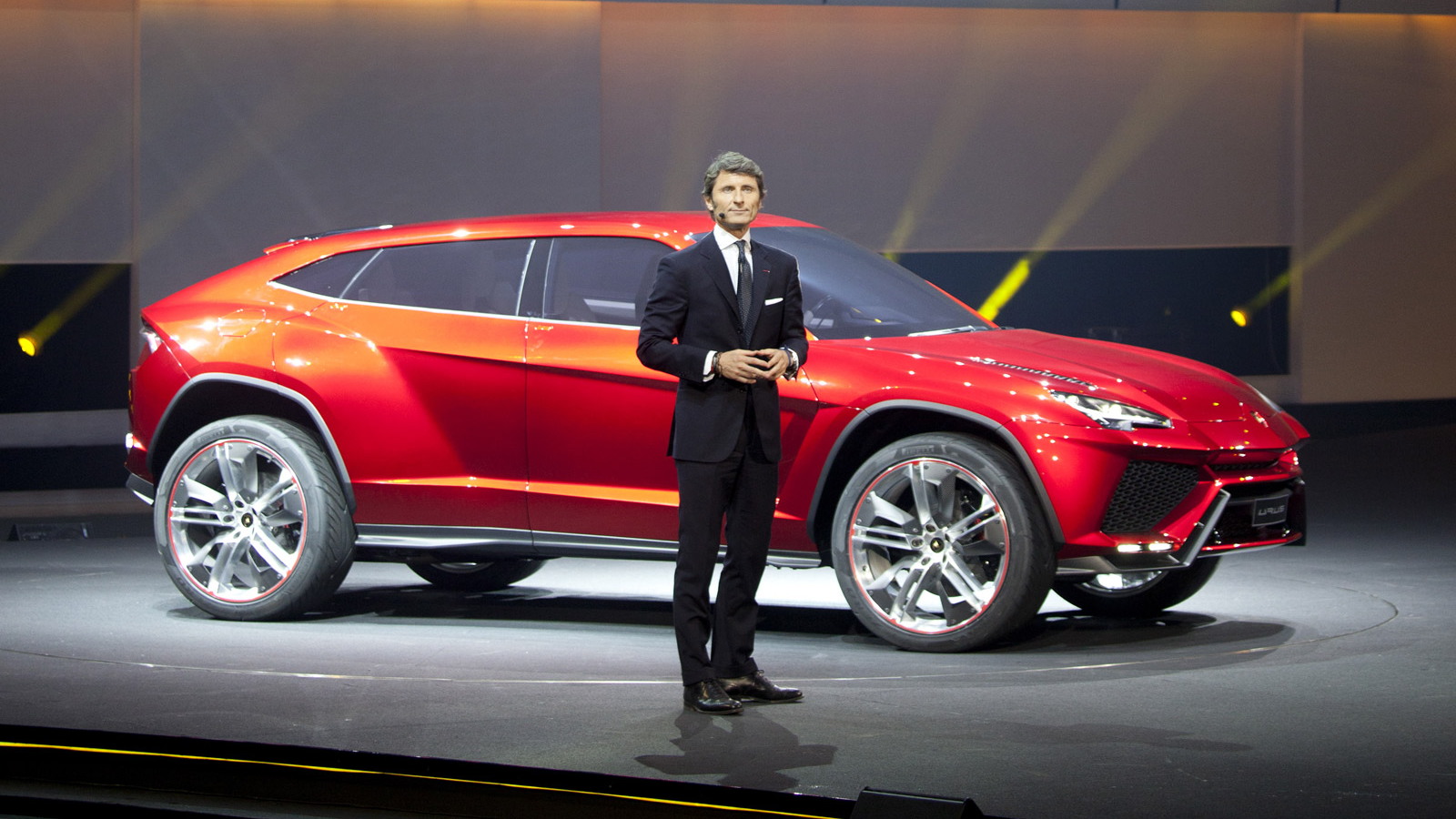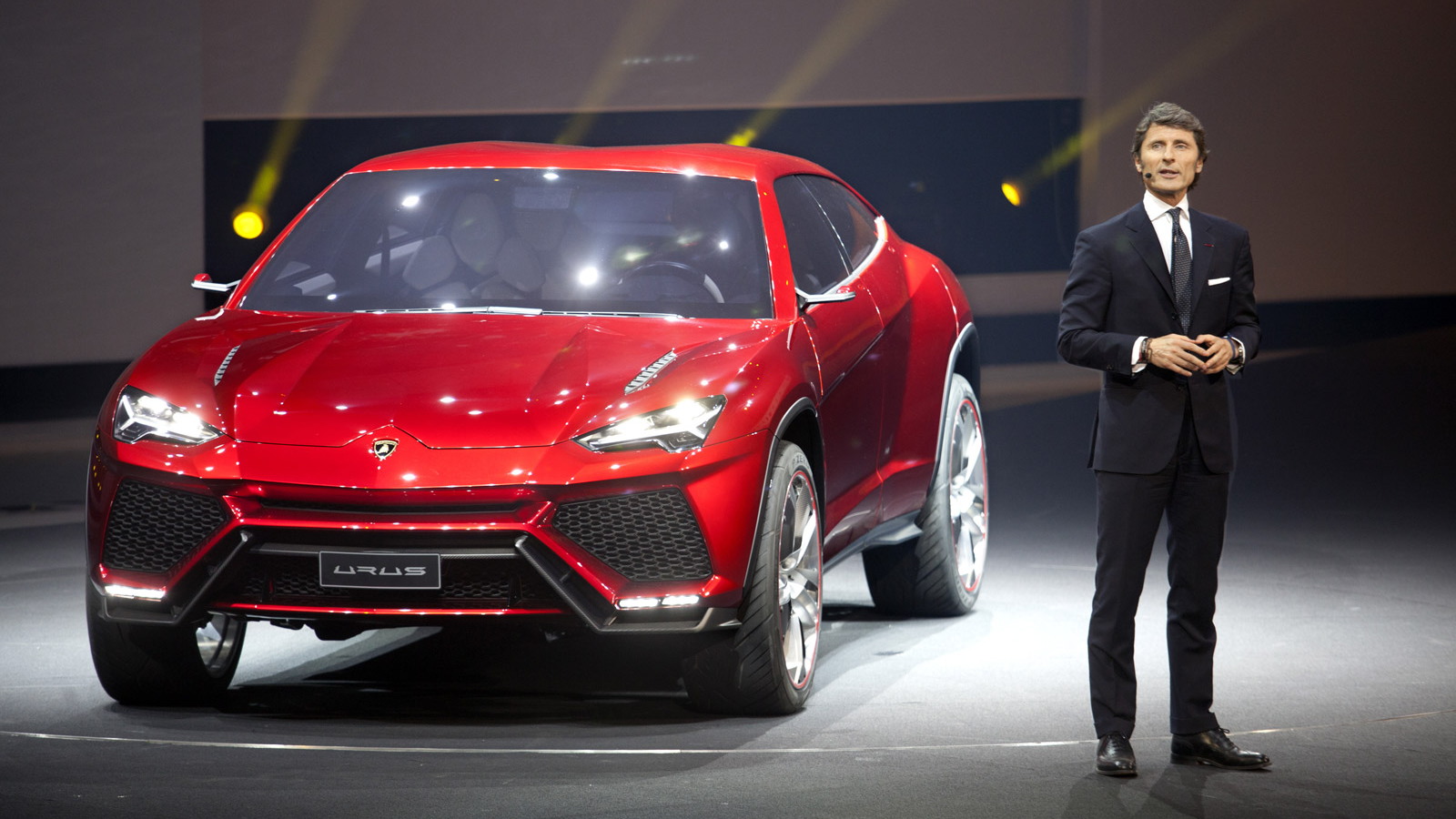Built with Italian design for an intended U.S. military contract, the Lamborghini LM002 was and remains an unprecedented departure from the brand's sleek and stylish supercar ethos. The Lamborghini Urus, the brand's second SUV, is much less so.
In fact, it's intended to be the supercar of SUVs, and with a 600-horsepower engine under the hood, it's off to a good start. Add to that the permanent all-wheel drive (another trait shared with all but one of Lamborghini's modern supercars), extensive use of carbon fiber, and a low-slung, streamlined, and sharply aggressive body, and the Urus looks as much like its supercar stablemates as the LM002 differed.
Beyond the power output, design, and some size specs, few other precise specs have been revealed as yet; the Urus is, after all, still a concept, though almost a certainty for production. Lamborghini thinks the Urus, likely to target a lower price point than the Gallardo and Aventador, while offering daily-driver utility, will sell up to 3,000 units per year, more than doubling the brand's current volume. Most of the sales will happen in the U.S., Russia, Middle East, and China, plus the U.K. and Germany.
Despite the massive power output, Lamborghini says the Urus will deliver the lowest CO2 emissions of all comparable super-SUVs (the BMW X5 M and X6 M, Porsche Cayenne Turbo, and Range Rover Sport Supercharged chief among them). It takes aim at that target with a low height, lightweight materials, and streamlined design. Huge 24-inch wheels wrapped in equally gigantic rubber provide the grip for the big Urus.

Lamborghini LM002 SUV
The lightweight materials are perhaps the most interesting aspect of the mix, with a forged carbon composite playing a leading role, though carbon fiber can be found in the body panels, structure, and interior as well. Adaptive aerodynamics balance ground clearance, high-speed stability, and efficiency as well, with adjustable front and rear spoilers responding to the driving conditions. Forged Composite material is used to make the center tunnel, all four seat buckets, and most of the interior structure.
As for the name--Urus--it is taken from a form of the name for the aurochs, the wild ancestor of modern domestic cattle. Though the aurochs is extinct, its genes live on in one form or other in many of the Spanish fighting bulls from which Lamborghini typically chooses its model names.
Standing 5.4 feet tall, 6.5 feet wide, and 16.4 feet long, the Urus SUV is compact and low, but still stands large compared to the low-slung supercars that share the badge.
Speaking at its unveiling at the 2012 Beijing Auto Show today, Lamborghini CEO Stephan Winkelmann said there was no decision taken to launch a production version yet but the automaker sees it as a perfect match for the rest of its lineup.






